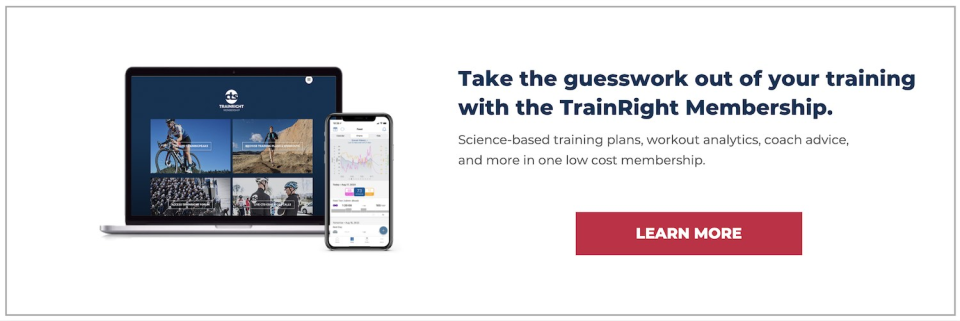12 Ways for 50+ Cyclists to Create Your Best Season Yet
Older Gen-X and Baby Boomer cyclists of any age face many of the same challenges younger cyclists face when it comes to performing at your best in the coming year. However, these challenges come with special twists and nuances for cyclists in their 50s, 60s, and 70s

Whether you’re just starting out or have been cyclist for decades, here’s an aging cyclist’s guide to creating your best season yet.
Recent data from USA Cycling and Trainingpeaks corroborates the trends CTS Coaches have seen developing over the past decade: the largest age groups in competitive and non-competitive road, gravel, cyclocross, and mountain bike events are 45 years old and older. Even the field sizes in the 60+ age groups are growing, meaning new people are discovering cycling later in life and that experienced cyclists are staying in the sport. The competition level in these age groups is also increasing.
If you’re a Gen X or Baby Boomer cyclist looking to improve your performance or be more competitive in your age group this season, here’s what the CTS Coaches recommend:
Commit Events to Your Calendar
Putting events on your calendar early in the year helps create the roadmap for your season. For aging athletes, spacing and frequency are the important parts of this roadmap. Scheduling too many events leaves too little time for recovery and event-specific training between them. Aim for a maximum of 3-4 events you’ll train specifically for and taper into. Separate these by around 6-8 weeks if possible, or schedule two of them in relatively close together (2 weeks) so you can prepare for both within one peaking process.
Give yourself lots of preparation time
Time is the greatest gift you can give yourself. The earlier you start training for any goal or event, the more gradually you can build toward peak fitness. Extending the training runway reduces injury risk by minimizing the speed at which you must ramp up training volume or intensity. More time also means you can absorb training setbacks – illness, unexpected work travel, higher-than-normal lifestyle stress – without getting derailed. Cramming for the exam is a bad idea at any age, but it’s even more risky for older athletes.
Diversify your activities
Older athletes should reduce sport specialization and increase generalized fitness because your general fitness allows you to continue training for your sport. In our experience, off-bike injuries from activities of daily living lead to more skipped cycling workouts than accidents or injuries from cycling. Athletes with the greatest sport-specific training compliance are those who diversify their activities. In particular, they incorporate weight-bearing exercises (hiking, running, tennis, etc.) and activities that stress their upper body muscles (strength training, cross-country skiing).
Eat more carbohydrate on the bike
Workout quality is important for athletes of all ages, but aging athletes are fighting an uphill battle to counter the gradual losses of maximum aerobic capacity (VO2 max) and muscle mass (sarcopenia). Consuming 40-60 grams of carbohydrate during rides lasting more than 60 minutes can help minimize the drop in power output during interval workouts or long endurance rides. You can get more out of the same number of weekly training hours with higher normalized power outputs and kilojoule counts. For athletes preparing for long gravel races, endurance mountain bike events, and gran fondos, consider training your gut to process between 60-90 grams of carbohydrate per hour.
Eat more protein off the bike
Daily protein intake recommendations for aging athletes are within the same ranges as for younger athletes – they’re just at the upper end of the athlete range. In other words, younger athletes engaged in high-volume and/or high-intensity training should consume about 1.5-2.0 grams of protein per kilogram of bodyweight per day. Cyclists over 50 should consumer 1.5 g/kg/d when training at a moderate volume or intensity and increase this 1.8-2.0 during intense training periods. Aim to consume protein in multiple 25-40 gram servings throughout the day. Read more about protein recommendations here.
Work with a coach
Aging athletes are often more mentally resilient than athletes in their 20s, but not as physically resilient. You just can’t absorb and plow through the mistakes and anomalies as well as you could when you were younger. That’s where coaching shows its real value. When things start to go wrong, an experienced coach can guide you through the turbulence. Sure, we’re biased because we’re coaches, but that doesn’t mean we’re wrong. Sign up for a free coaching consultation here.
The above is a short excerpt from the full CTS TrainRight article, to read the full article, please visit: https://trainright.com/12-ways-for-50-plus-cyclists-to-create-your-best-season-yet
FREE 14 DAY MEMBERSHIP TRIAL
Gran Fondo Guide fans, click on the image above and get TrainRight Membership for a 14 day no obligation trial. TrainRight Membership comes with a 30-day money-back guarantee!
About CTS
As it has since 2000, Carmichael Training Systems leads the endurance coaching industry with proven and innovative products, services, and content. And the results speak for themselves; no other coaching company produces more champions, in such a wide variety of sports and age groups, than CTS.
For more information, please visit: https://trainright.com

